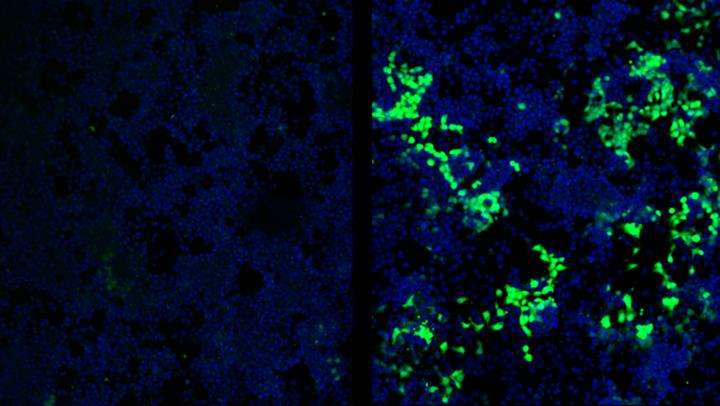Scientists reveal how stem cells defend against viruses

Scientists from the Institute of Molecular and Cell Biology (IMCB), a research institute under the Agency for Science, Technology and Research (A*STAR), Singapore, have uncovered the mechanisms which embryonic stem cells employ to inhibit virus expression. The ground-breaking discovery could potentially advance stem cell therapeutics and diagnostics.
Several stem cell types including embryonic and haematopoietic stem cells are known to be capable of suppressing the activities of infected viruses and viral DNA residing in the host genome. This characteristic property, known as proviral silencing, however, has not been fully understood. In order to study this, a team of scientists from IMCB designed a novel assay which allowed them to screen all the genes present in embryonic stem cells.
Through the screening platform, the team identified 303 genes and elucidated 148 biological processes and pathways linked to proviral silencing, suggesting that proviral silencing is controlled by coordinated mechanisms involving multiple cellular pathways. Through a comprehensive analysis, the scientists concluded that two specific genes, Chaf1a and Sumo2, are the key factors linked to proviral silencing. The findings of the study were reported in the top-tier scientific journal, Cell.
Further studies on the roles of Chaf1a and Sumo2 in stem cell proviral silencing can shed new light on stem cells and virus biology that could translate into valuable therapeutic and diagnostic applications.
Dr Jonathan Loh, Principal Investigator of IMCB, said, "This is the first detailed study on proviral silencing in embryonic stem cells, and it helped us gain a deeper understanding of stem cells and its unique proviral silencing ability. With the new insights, we can better identify the good stem cells and use them more efficiently and safely in clinical therapies. We can also devise diagnostic approaches by studying the activities of the virus DNA within stem cells in various diseased conditions."
Prof Hong Wanjin, Executive Director of IMCB, said, "Fundamental research on human biology seeks to understand crucial biological processes occurring within humans in order to bring advancement in therapeutics and improve lives. With the growing importance of stem cell therapy, this study is a fitting example of how upstream research can potentially benefit and shape its applications."
More information: Systematic Identification of Factors for Provirus Silencing in Embryonic Stem Cells, www.cell.com/cell/abstract/S0092-8674%2815%2901089-2
Journal information: Cell




















